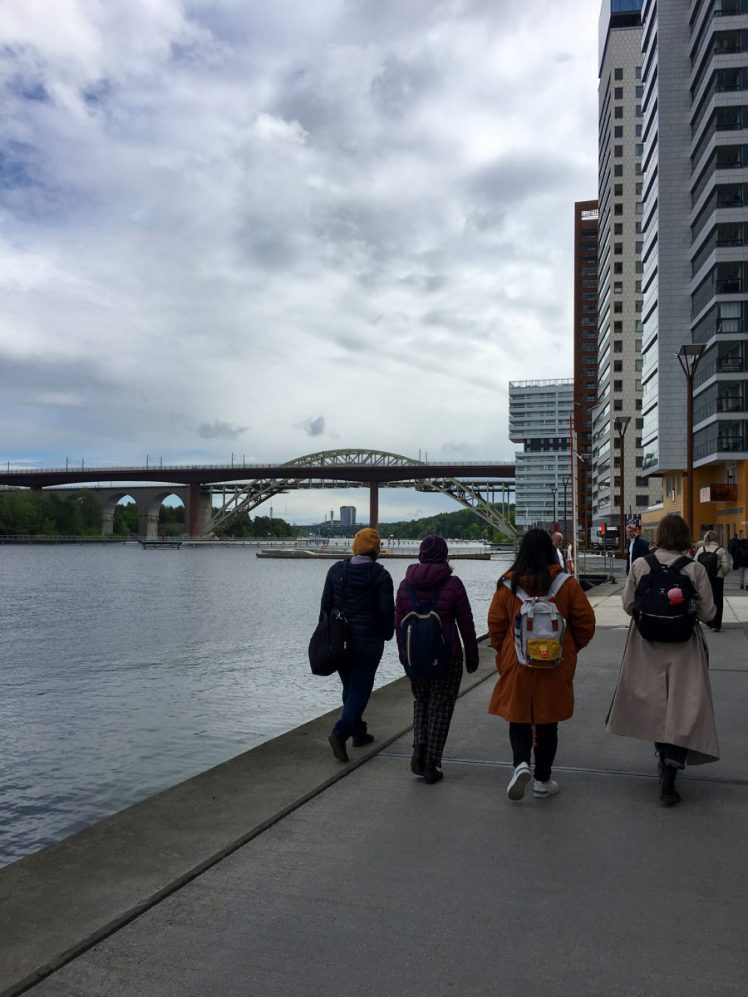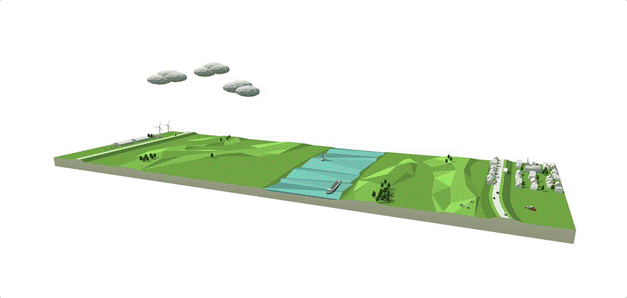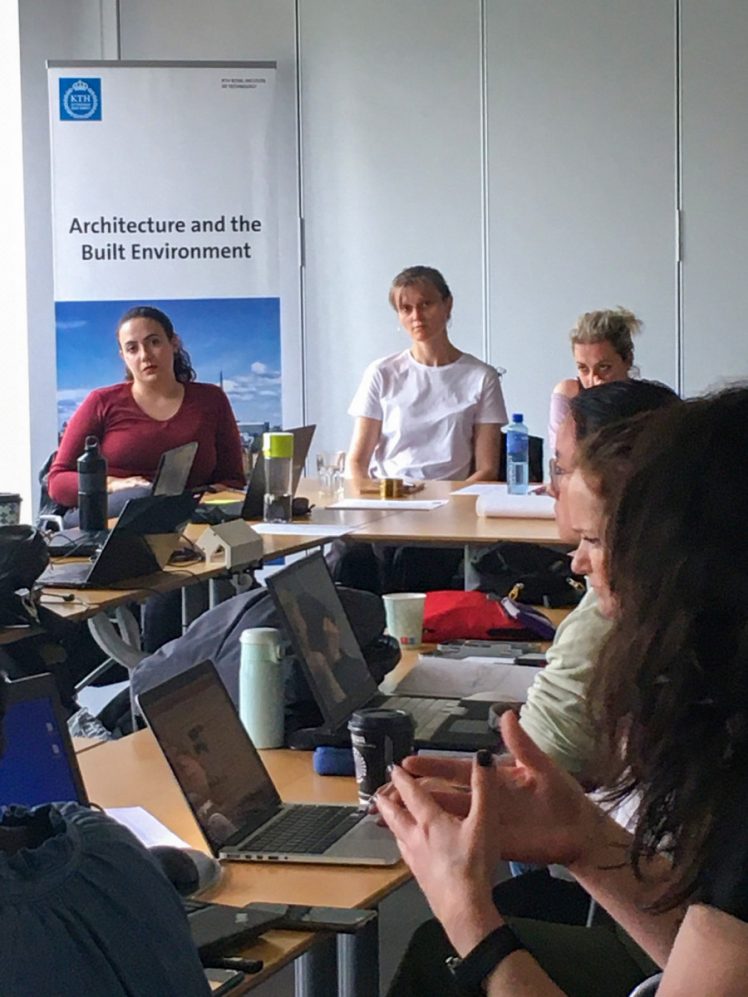MSc Metha Bregman, behavioral scientist and new business models consultant, CPONH.
MSc Karen Jonkers, network developer and change management facilitator, CPONH.

As part of the EU program SOS Climate Waterfront, we, Karen Jonkers and Metha Bregman visited on behalf of CPONH, the workshop SOS Climate Waterfront in Sweden. During our one-month stay in Stockholm in May-June 2022, this gathering brought us in contact with a brand new international network of climate-aware promovendi, architects, teachers and researchers from a number of countries. We brought home an increased understanding of the Swedish society, the public transport system and Stockholm’s aspirations towards sustainable urban development. But what did we actually take home in terms of insights into the climate situation of Stockholm? And what typical Dutch solutions could be applied?
More deaths from extreme heat and more frequent downpours
Daniel Oudin Åström of Umeå University, Sweden, and colleagues, report in Nature Climate Change, that deaths from extreme heat doubled in Stockholm, Sweden, between 1980 and 2009 and the agent behind this grim reckoning seems to be global warming. The not very surprising conclusion is that with increasing temperatures, and with more moisture in the air, there will be more rain. Looking for extreme events, the scientists conclude that as the century wears on, torrential downpours of the kind that once happened only every 50 years will start to happen every 20 years or so.
So, like in the Netherlands, climate change leads to extreme heat as well as extreme rainfall and flooding, asking for solutions in urban planning and awareness of potential risks in humans and youth to provide for future solutions.
Climate adaptation, lessons from the Netherlands
For the last 8 years, the water authorities in the Netherlands have been increasing the perspective of ‘climate adaptation’. The idea is that adaptive cities and landscapes need flexible solutions for the (climate) developments of the future. The country has invested in the development of a climate map in which the consequences of extreme downpours and heat and draught become transparent. This gives a clear insight into the vulnerable places and points out where to solve the most urgent issues in case of extreme weather. Landscape elements that contain solutions can be increased water storage capacity and water disposal like wadis for low areas in town or more bushes and trees to prevent heat stress in stony areas. Given our history and present with ‘flooding’ our focus has been more on this, than e.g. on heat prevention. The knowledge portal climate adaptation bundled knowledge example projects Take a look!
The Dutch adaptive embankment made of sludge
A very Dutch, concrete example to prevent cities from flooding, is by building a new adaptive embankment where sludge has been used as a building block for the river landscape.

In the devised design and future vision, the new adaptive embankment is conceived of as part of a wide landscape zone. For this zone, a reinforcement strategy is provided in which sedimentation (sludge) is used to form new river dunes, thus strengthening the embankment. The result is a dynamic river landscape that welcomes recreation, environmental development and new forms of habitation.
Although interesting solutions can thus be found in the Netherlands, as well as in Stockholm, it remains a huge challenge to create future-proof cities because as in Stockholm, a big part of the urban territory in the Netherlands is often private property but also very densely populated and given away as well. The top 3 problems for urban planners in the Netherlands are therefore said to be:
- the earlier mentioned return-on-investment problem,
- missing sense of urgency, and
- political and institutional need for legislation.
Source: Deltares 2015, available online
City Deals – a business model that fits Dutch culture
Given the Dutch history and culture of business and ‘do-it-yourself mentality’ combined with a certain ‘civil disobedience’, solutions are focused on new business models that are based upon ideas on cooperation between the corporate and public world as well as involving citizens. And so; At the end of 2015, various parties involved came up with the idea of starting a City Deal for the globally challenging theme of climate adaptation. “In City Deals, ambitious partners from the cities, public and private, work together with the national government on new solutions, in which existing practices and financing models are discussed.” In the documentary film The Resilient City Explained, this journey is visualized with projects, stories and personal visions. More information can be found here.
A suitcase filled with ideas on ‘Sustainable Tuesday’
As mentioned before: involving residents and educating adults and children in climate awareness, is found to be of great influence in the success of implementing solutions. Interesting examples are e.g. climate festivals, or any kind of festival executed in a ‘planet inclusive way’, i.e. run on renewable energy and recycled water and recycled waste. To raise awareness and involve people in finding solutions, the first Tuesday of September is Sustainable Tuesday. A special day on which sustainable ideas and initiatives are given a platform in political The Hague. On this day, the cabinet will receive the Sustainable Tuesday suitcase containing hundreds of sustainable ideas and initiatives from all corners of our society. The most sustainable, innovative and distinctive ideas and initiatives have a chance to win prizes and the opportunity to give the idea or initiative an extra boost.
Lessons from Stockholm – multidisciplinary approach needed

Our statement is that we learned in Stockholm that we need a multidisciplinary approach to urban planning and design. We need to combine design solutions, new technologies and innovations with more ‘soft’, psychological and change knowledge skills. Ambitions like creating awareness, influencing behavior and involving and educating residents, will prosper with the knowledge of behavioral change experts. In the business area, new business models like co-creation and sharing investments and revenues are to be considered.
We hope to have given you some ideas and are ready for exchanging more ideas and examples to create the most wonderful tantalizing robust and climate-proof cities.
CPONH, Collective Private Enterprise-Noord Holland of multi-disciplinary academics, is a non-governmental Foundation, aimed at supporting (Dutch) civilian initiatives on sustainable housing and climate-proof neighborhood areas.
More information about the project SOS Climate Waterfront
Contact persons at KTH
Lina Suleiman, School of Architecture and the Built Environment
Katarina Larsen, School of Architecture and the Built Environment

